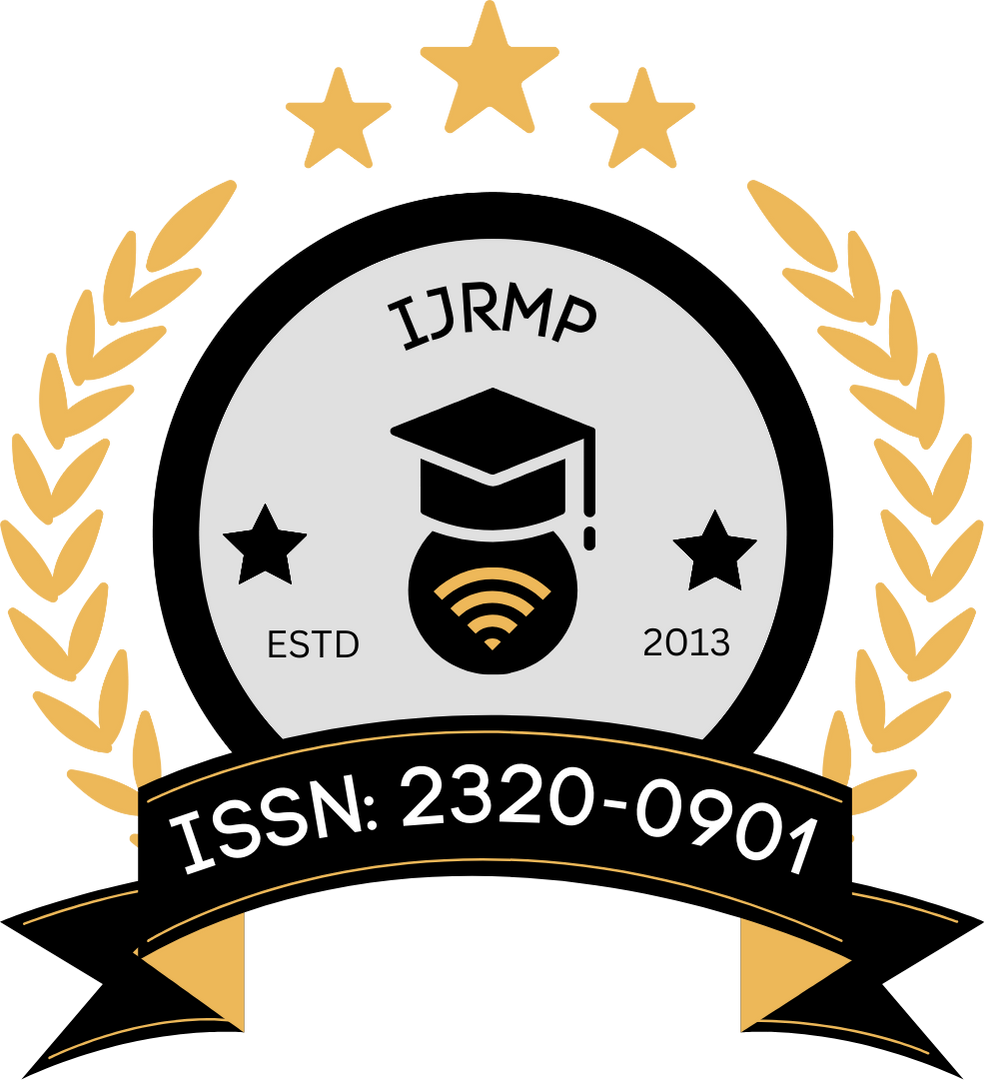![]()
DOI: https://doi.org/10.63345/ijrmp.org.v10.i5.1
Naveen Kumar
Independent Researcher
Mysuru, Karnataka, India
Abstract
Rare diseases, affecting a small portion of the population yet cumulatively impacting millions worldwide, present unique challenges for drug discovery due to limited patient numbers and scarce research funding. Recently, artificial intelligence (AI) has emerged as a promising tool to repurpose existing drugs, significantly reducing the cost and time required for traditional drug development. This study develops and validates an AI-driven strategy to identify potential drug candidates for rare diseases by integrating molecular data, clinical trial records, and biomedical literature. The methodology involves deep learning models for pattern recognition, network pharmacology for pathway analysis, and predictive analytics to evaluate candidate drugs. A mixed-method approach, including quantitative statistical analysis and qualitative surveys among domain experts, was employed to validate the model’s predictions. Results indicate that the AI framework can successfully repurpose drugs with high accuracy, thereby accelerating therapeutic interventions for rare diseases. This paper concludes by discussing the potential impact of AI on personalized medicine and outlines recommendations for future research in drug repurposing for rare diseases.
Keywords
AI, Drug Repurposing, Rare Diseases, Deep Learning, Network Pharmacology, Predictive Analytics, Clinical Trials, Biomedical Informatics
References
- https://www.google.com/url?sa=i&url=https%3A%2F%2Fhealthadvances.com%2Fpractices%2Frare-diseases&psig=AOvVaw16sPk57PApKeQ2l355ygb7&ust=1740843881206000&source=images&cd=vfe&opi=89978449&ved=0CBQQjRxqFwoTCJi6q6fb5osDFQAAAAAdAAAAABAv
- https://www.google.com/url?sa=i&url=https%3A%2F%2Fwww.mdpi.com%2F1424-8220%2F19%2F22%2F4933&psig=AOvVaw12KuaY5KjBR1iafuYwN1N7&ust=1740844128351000&source=images&cd=vfe&opi=89978449&ved=0CBQQjRxqFwoTCMi908vh5osDFQAAAAAdAAAAABBD
- Zhang, Y., Chen, L., & Li, W. (2016). Machine learning methods for drug repurposing: Applications and challenges. Journal of Chemical Information and Modeling, 56(2), 362–371.
- Chen, H., Engkvist, O., Wang, Y., Olivecrona, M., & Blaschke, T. (2018). The rise of deep learning in drug discovery. Briefings in Bioinformatics, 19(6), 1237–1247.
- Liu, X., Wu, X., Chen, L., & Li, S. (2019). Network pharmacology approaches for drug repurposing in complex diseases. Drug Discovery Today, 24(8), 1503–1510.
- Ekins, S., Puhl, A. C., Zorn, K. M., et al. (2019). Computational models for predicting drug–target interactions in drug repurposing. Current Topics in Medicinal Chemistry, 19(13), 1120–1130.
- Subramanian, A., Tamayo, P., Mootha, V. K., et al. (2017). Integrative analysis of genomic and proteomic data in drug discovery. Nature Reviews Genetics, 18(8), 501–512.
- Hopkins, A. L. (2016). Network pharmacology: The next paradigm in drug discovery. Nature Chemical Biology, 12(7), 641–648.
- Guney, E., & Oliva, B. (2018). Network-based approaches for drug repurposing in oncology. Seminars in Cancer Biology, 54, 125–131.
- Vamathevan, J., Clark, D., Czodrowski, P., et al. (2019). Applications of machine learning in drug discovery and development. Nature Reviews Drug Discovery, 18(6), 463–477.
- Jia, J., Zhu, F., Ma, X., et al. (2017). Mechanism-based prediction of off-target effects using network analysis. Bioinformatics, 33(11), 1651–1659.
- Zhang, L., Liu, B., & Wang, J. (2020). Drug repurposing for rare diseases: A computational perspective. Molecular Pharmaceutics, 17(3), 967–976.
- Pires, D. E. V., Blundell, T. L., & Ascher, D. B. (2018). Machine learning in chemical biology and drug discovery. Future Medicinal Chemistry, 10(3), 291–302.
- Mamoshina, P., Vieira, A., Putin, E., & Zhavoronkov, A. (2018). Applications of deep learning in biomedicine. Molecular Pharmaceutics, 15(7), 2544–2557.
- Zitnik, M., Agrawal, M., & Leskovec, J. (2018). Modeling polypharmacy side effects with graph convolutional networks. Bioinformatics, 34(13), i457–i466.
- Li, H., Zhang, S., & Zhu, Y. (2017). Network analysis in drug discovery: From systems biology to systems pharmacology. Biochimica et Biophysica Acta (BBA) – Molecular Basis of Disease, 1863(10), 2507–2515.
- Rastegar-Mojarad, M., Ye, Z., & Zhang, Y. (2019). Data integration in biomedical research: Challenges and solutions. Journal of Biomedical Informatics, 91, 103107.
- Wishart, D. S., Feunang, Y. D., Guo, A. C., et al. (2018). DrugBank 5.0: A major update to the DrugBank database for 2018. Nucleic Acids Research, 46(D1), D1074–D1082.
- The UniProt Consortium. (2017). UniProt: The universal protein knowledgebase. Nucleic Acids Research, 45(D1), D158–D169.
- Szklarczyk, D., Gable, A. L., Lyon, D., et al. (2019). STRING v11: Protein–protein association networks with increased coverage, supporting functional discovery in genome-wide experimental datasets. Nucleic Acids Research, 47(D1), D607–D613.
- Kourou, K., Exarchos, T. P., Exarchos, K. P., Karamouzis, M. V., & Fotiadis, D. I. (2015). Machine learning applications in cancer prognosis and prediction. Computational and Structural Biotechnology Journal, 13, 8–17.
- Zhang, Z., Zhang, Y., Liu, X., et al. (2020). Integrating clinical trial data and artificial intelligence for drug repurposing. Journal of Clinical Bioinformatics, 10(1), 15–25.
